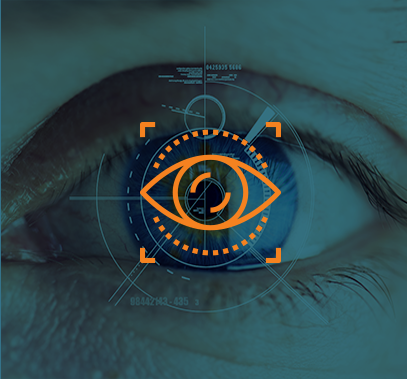We all sleep, and naturally with our eyelids completely shut to block out light and keep our eyes from drying out. But are those lids really shut. Nocturnal lagophthalmos is defined as the inability to completely keep the eyelids shut during sleep. You may have seen it in young kids when they sleep their eyelids do not full close. You may also have felt its’ after-effect in the morning, when waking up with dry crusty irritated eyes. That is a sign that your eyelids are not fully sealed shut during sleep. This can be natural phenomena but it can also be cause by certain conditions. This is problem that is often left ignored leaving lasting effects to people’s overall ocular health. But where there is a problem, there is always a solution.
Causes
Aging
It is quite debatable what that special age for when things start to go down hill for your body. Apart from increasing in wisdom, there is not much great things that come with aging. In addition to waking up with body aches, frequent restroom stops in the middle of the night, and an obsession with the weather channel, there is the weakening of the Mueller muscles responsible for completely shutting your eyelids. I see these in patients 60+ when examining the cornea. This condition results in inflammation in the inferior 1/3rd of the cornea resulting and symptoms of dry eyes. Aging is the number one cause of lagophthalmos.
Nerve and muscle restriction Damage
Muscles need nerves to work, if the nerves are damaged then those muscles won’t function. Nerve damage associated with herpes simplex infection, surgery or injury can result in lagophthalmos. Bell’s palsy, facial nerve paresis, results in nerve damage causing unilateral lagophthalmos. This condition is mostly idiopathic but can be associated with herpes simplex re-activation. Eyelid lift surgery, if over-done, can also cause lagopththalmos due to not enough skin tissue left on the upper eyelid to cover the eye when closed. Chemical burns or injury to the eyelids can damage the skin tissue and muscles of the eyelids preventing full eyelid closure. Thyroid disorders can cause the eyeballs to protrude making it more difficult for the eyelids to close shut naturally during sleep. There is a new medicine in town that helps with this by reducing the swelling of the ocular muscles to reduce that stare appearance. Ask your optometrist about it.
Obstructive Sleep Apnea
Along with inhibiting breathing during sleep, obstructive sleep apnea can cause the eyelids to become very flaccid. Lids that are loose are more likely to open during sleep. There are two main ways this can happen
- A lot of people with mild sleep apnea have to sleep on their side in order to breathe easier but this increases the likelihood of their eyelids opening while pressing against the pillow. As their eyelid slightly opens, their eye will rub against the bedding, blanket or pillow causing eye irritation.
- Upward pressure from air escaping an improper size CPAP mask can push the lids open thus drying out the eye’s surface.
There are many different types of CPAP masks and sizes. It is imperative you visit your PCP multiple times in order to make sure your mask fits you properly.
Natural Causes
If you had it, then your kids may also get. Eyelids not full closing in sleep is not a rare occurrence. It certainly is a bit frightening when you see it in someone else first hand. You are not sure if that person is awake or asleep. Like one patient of mine with natural nocturnal lagophthalmos once joked, she is just nosy and likes see what’s going on around her while she is sleeping. Of the 3 main causes, this one is least likely to results in symptoms of dry irritated eyes after waking up.
Solutions
There are many sleep masks that will help protect your eyes from being scratched by the pillow, your hand rubbing it and even the fan or vent air drying up your eyes. There is the traditional sleep eye masks that simply covers your eyes during sleep; similar to the the one given during a long flight. But these masks do not provide the necessary protection. The goal of the sleep mask is to either by tight enough to keep the lids closed or provide a protective space between your eyes and the mask. The latter helps keep your eyes from rubbing on the pillow, blanket or sleep mask itself. In addition to eye protection, there are sleep masks that provide moisture. This is very helpful for those that have chronic dry eye syndrome. Artificial tear ointments are another option to keep the eyes moisturized and protected in case the lids open at night. Surgery is also an option as a last resort. I will discuss these different types of sleep masks in later articles.





